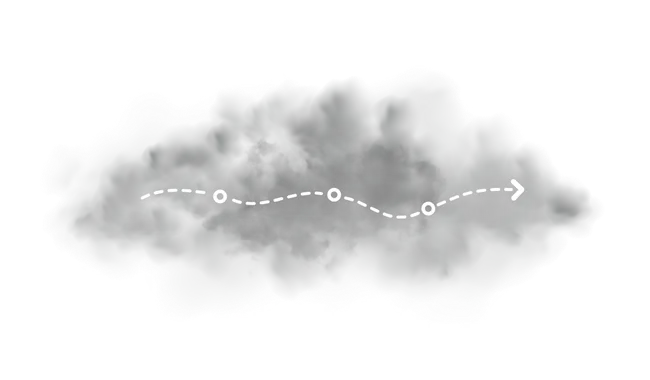
EVERYTHING LEAVES A TRACE
Everything and everyone leaves an environmental footprint behind. Measuring your own footprint is limiting, but here you can read about the process of certifying a product with an EPD, the standardized life cycle assessment that everything starts with.
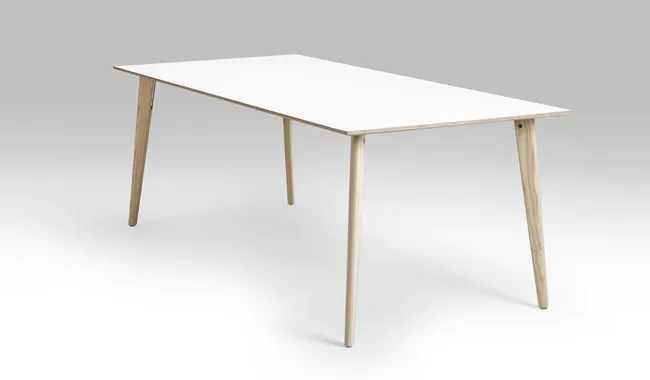
EXAMPLE SAREK, table
To certify a life cycle assessment (LCA) with an environmental product declaration (EPD), it must follow standardized methods, allowing comparisons of environmental impact. Emissions are reported in kilograms of carbon dioxide equivalents (kg CO₂e) to include the impact of different greenhouse gases. Methane (CH₄), which can be emitted in upstream processes and waste management, has about 28 times higher warming potential than carbon dioxide, making it particularly important to consider in climate calculations. Below is our example with the Sarek table.
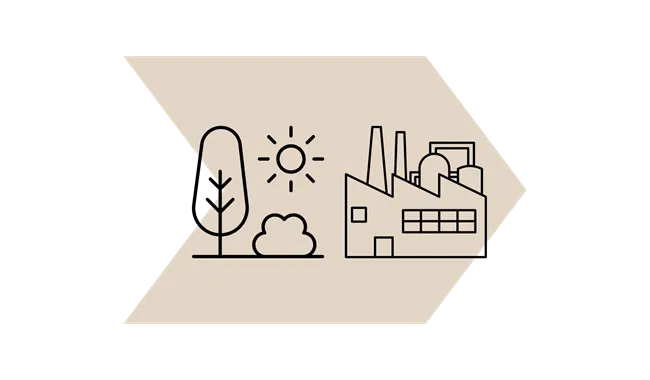
UPSTREAM
In an EPD, the upstream process includes all activities before the production of a product begins. It includes extraction and processing of raw materials, energy use, transport, and pre-treatment of inputs. Chemicals and other resources used in the raw material process are also included.
Example: For plywood, the upstream process includes tree felling, transport to the sawmill, drying of timber, and glue production. Additionally, energy consumption and chemicals used during gluing and treatment of the wood before further processing are included.

LUNDBERGS FURNITURE - PRODUCTION
In an EPD, the production process includes the steps where raw materials are transformed into a finished product. It includes processing, assembly, surface treatment, and quality control. Energy use, chemicals, and waste management are also included.
Example: At Lundbergs Furniture, this means processing wood, assembling surfaces of various materials, and treating plywood and solid wood with water-based lacquers or oils before quality control and packaging.
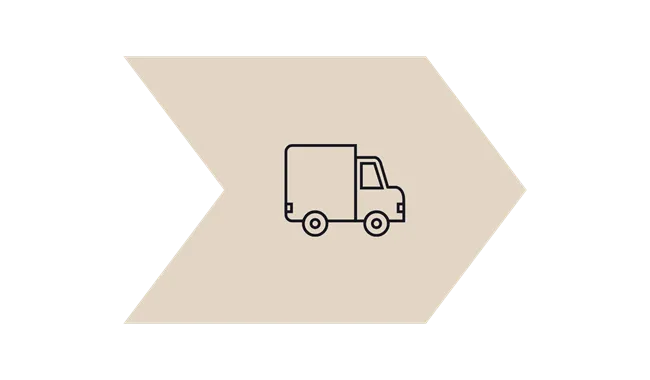
TRANSPORTATION
Transportation of materials and products during the product's life cycle, including shipping of raw materials to the factory, distribution of finished products, and any transportation during waste management.
Example: At Lundbergs Furniture, wood is transported from suppliers to the factory in Tibro, where finished furniture is then distributed to retailers and customers.
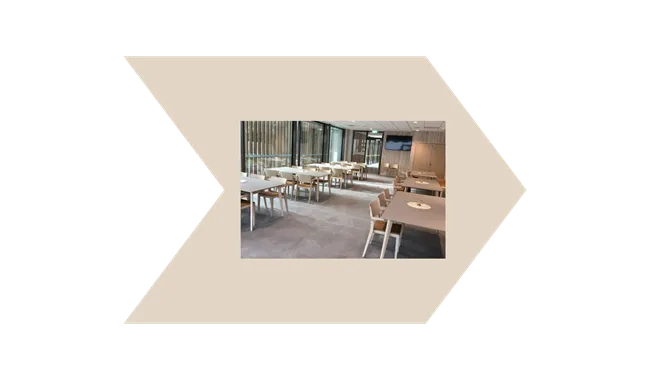
USE
In an EPD, the use phase includes the environmental impact that occurs during the product's lifetime, including maintenance, cleaning, and repairs. For furniture, this may involve care of wood surfaces with oils or lacquers and any repairs to extend the lifespan.
Example: At Lundbergs Furniture, the use phase may include regular care of wood surfaces to preserve quality and reduce the need for new production. In an EPD-based life cycle assessment, a reference lifespan is often used, for example, 15 years for a table, to standardize environmental impact in calculations.
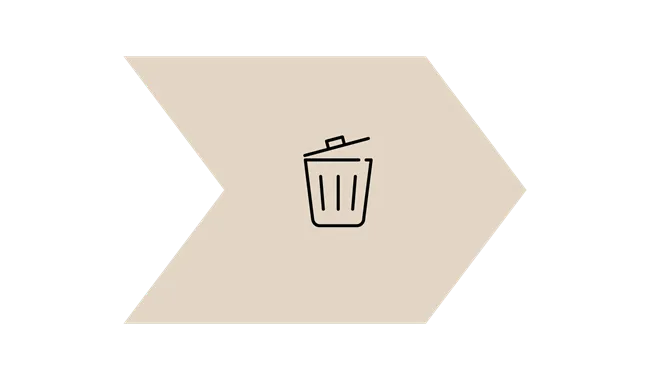
WASTE MANAGEMENT
In an environmental product declaration (EPD) the waste management phase includes the processes that occur when a product reaches the end of its lifecycle, including disassembly, sorting, recycling, and final disposal.
Example: Sarek-table is designed for easy disassembly, facilitating reuse and recycling. When the table is no longer used, the wood components can be recycled or energy recovered through combustion in heating plants. Metal fittings, such as screws and brackets, can be sorted out and recycled as metal scrap, reducing the need for new raw material production.
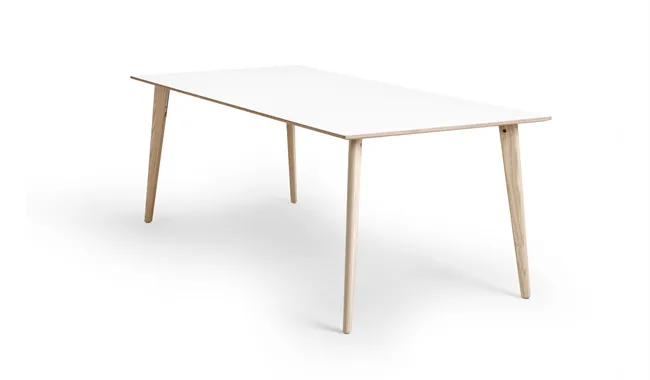
TOTAL ENVIRONMENTAL IMPACT 51.8 kg CO₂e
Below, the distribution of the total emissions can be seen, divided by each stage in the lifecycle where they are created. The bars are indicated in kg CO₂e
result
compilation
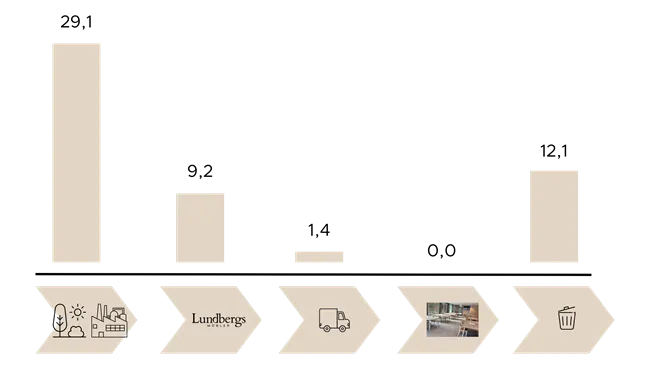
The bars show the environmental impact in kg CO₂e for each process in the linear lifecycle. The data is taken from the EPD for the SAREK table with dimensions H730, L1400, B750 mm.
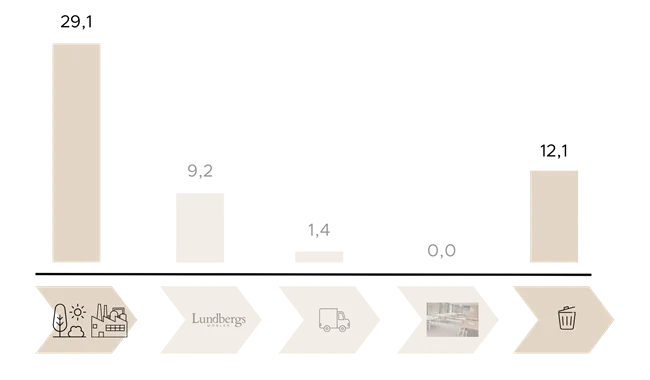
The relationship between the bars is no coincidence – in many cases, the environmental impact is greatest during raw material extraction and waste management in the linear lifecycle.
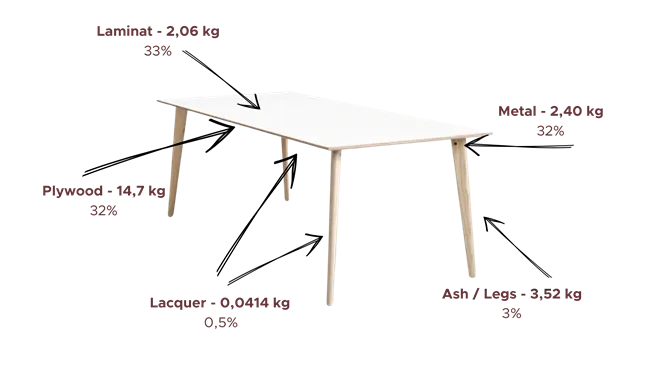
A closer analysis of the materials causing emissions in the Upstream processes shows clear differences in their environmental impact.